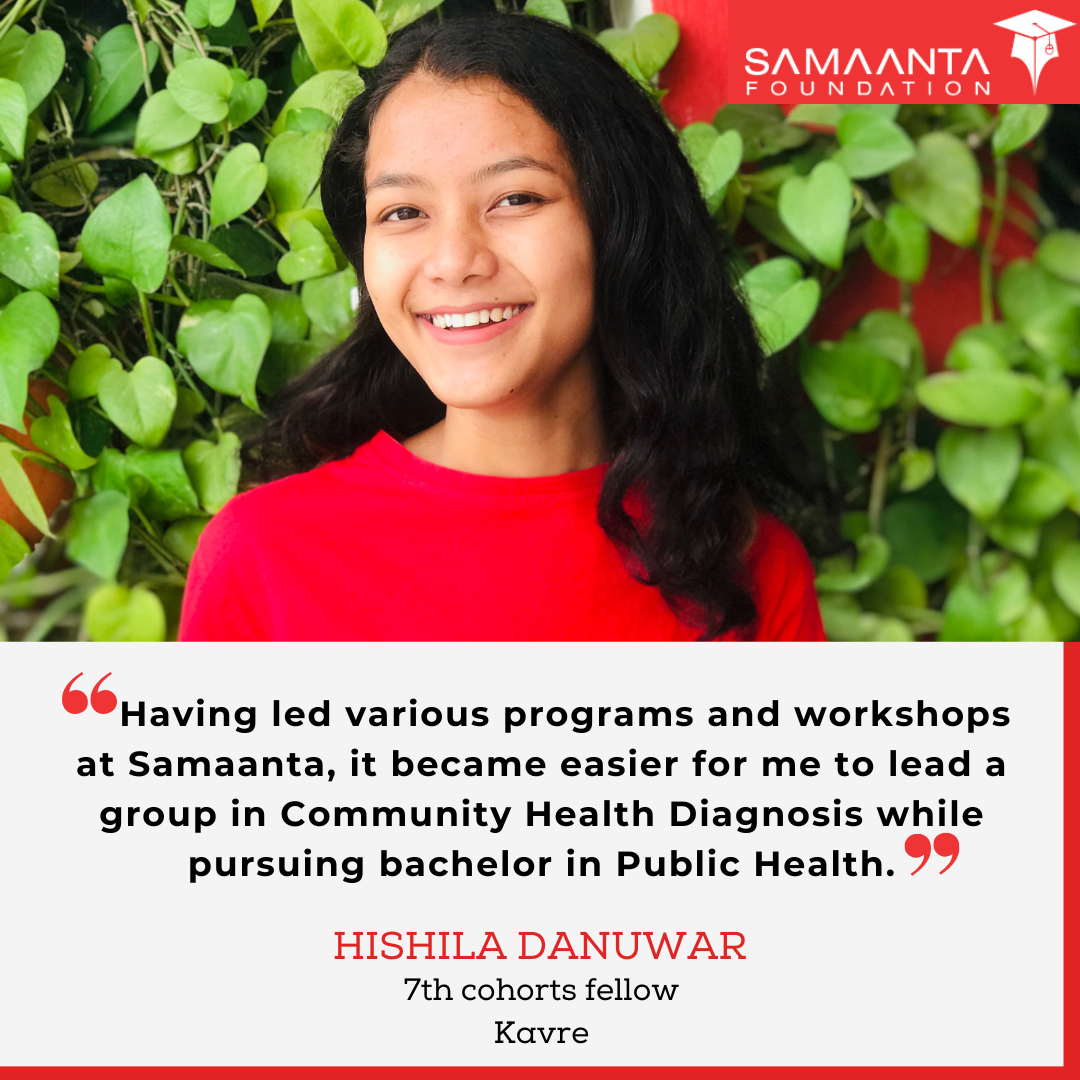Hishila Danuwar is a seventh cohort fellow at Samaanta Foundation. She recently led a month-long Community Health Diagnosis program at Sano Sirubari, Sindhupalchowk. Her remarkable leadership during this CHD brings us immense joy. It fills us with a sense of pride to witness our fellows making significant contributions to the community.
Her empowering experience is a testament to the fulfillment of the goals we envisioned when we started the Samaanta Foundation twelve years ago. This makes us even more confident that quality education can change lives and gives us the determination to work to further extend these opportunities.

Community health diagnosis (CHD) is one of the courses in the curriculum for Public Health in Nepal. This course consists of a month-long residency wherein students identify the prominent health needs of a community and formulate appropriate interventions.
A total of fifteen people from our class visited Ward No. 7, Chautara Sanga Chowk, Gadi municipality in Chaitra, 2079. On the first day of our program, after dealing with the necessary logistics, we jumped right into building rapport with the community. We believe rapport building enabled extensive community participation which helped ensure the success of the CHD.
We visited the health post, the Ward Office, and the community school and conversed with the focal persons of the community. Similarly, we conducted a resource assessment walk in the community to analyze the current status of the resources including roads, schools, patterns of residence, etc.
We also conducted the social mapping of ward no. 7. Our participants included members from the community including the ward chairperson, and school teachers. The social mapping helped us gain a deeper insight into the factors that influenced the health of the people in that community. Some of the factors were the availability and state of agricultural land, water resources, health facilities, schools, roads, rivers, and the pattern of residences.
As the program lead, I was responsible for conducting daily meetings at the end of each day to discuss the work status and decide on a plan for the next day. I was also responsible for delegating roles and responsibilities according to potential and interests to ensure the smooth operation of our program. We started data collection on the fourth day. We used systematic random sampling and successfully collected data from 440 households. Our questionnaire included 300 questions related to demography, socioeconomic status, environmental sanitation, health and child health, geriatric health, prevalence of communicable and non-communicable diseases, etc.
Likewise, we also carried out focus group discussions (FGD) with different groups of people on four topics for qualitative data. We also took in-depth interviews of focal persons, including the ward chairperson and those in charge of health posts. We analyzed the data with some help from our teachers. We then presented our findings to the community members. After identifying the health problems and sharing our findings with the community, we developed an action plan to conduct Micro Health Projects (MHP) and School Health Programs (SHP) that targeted the top ten health problems.
I divided our group members into smaller groups to lead different MHP and SHP initiatives. This allowed us to apply theoretical knowledge into practice. I also managed the venue and communicated with focal persons to facilitate the MHP and SHP. After conducting the MHP and SHP, we held a final community presentation to share about our work and expressed our gratitude to the community.
My participation in various activities and leadership roles, including the Fellow-led programs at Samaanta, prepared me to lead a team of 15 members during the community health diagnosis program. At Samaanta, I learned and practiced teamwork, communication skills, time management, and public speaking skills, which were integral for leading the one-month community health diagnosis program.
